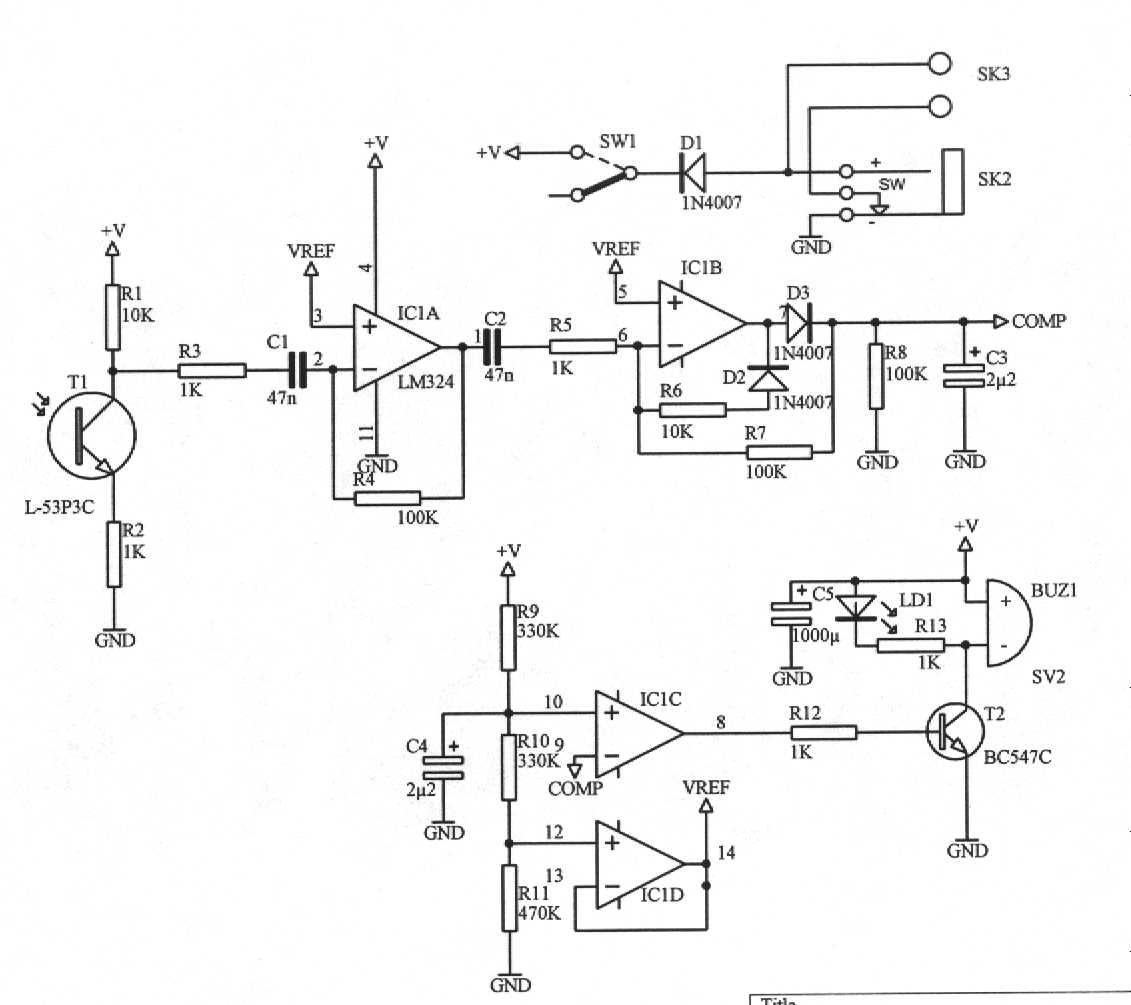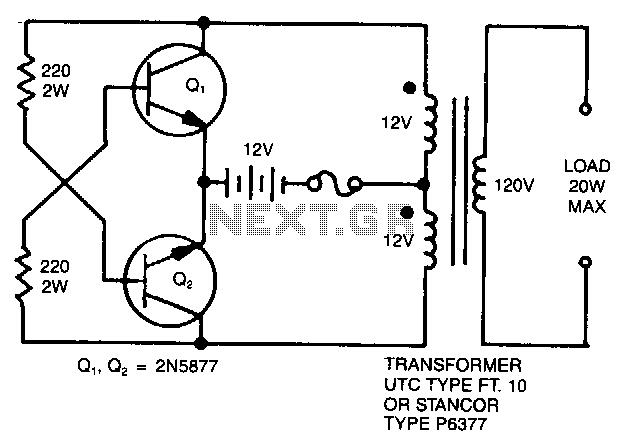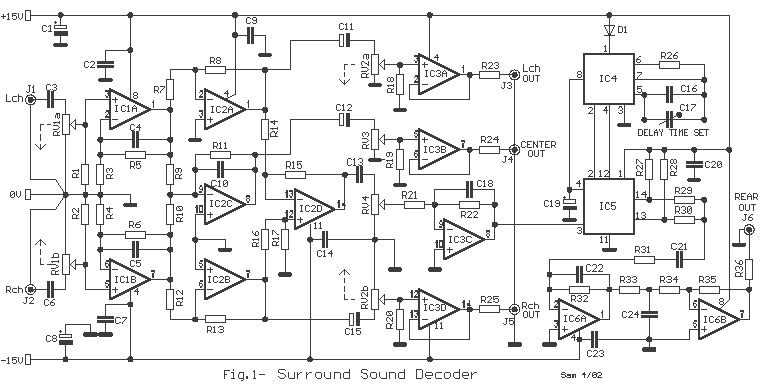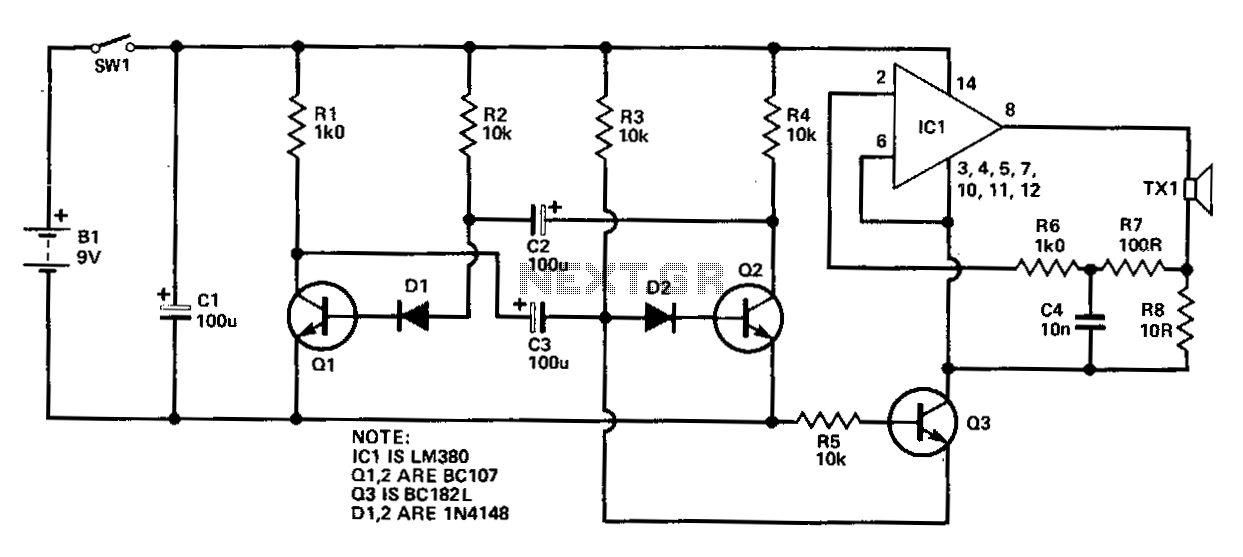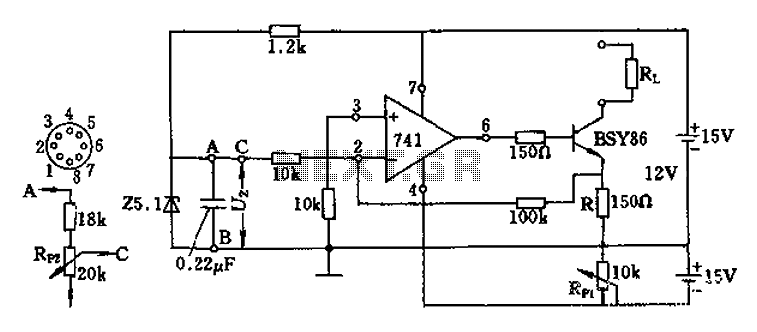
Ultrasonic Sound Source
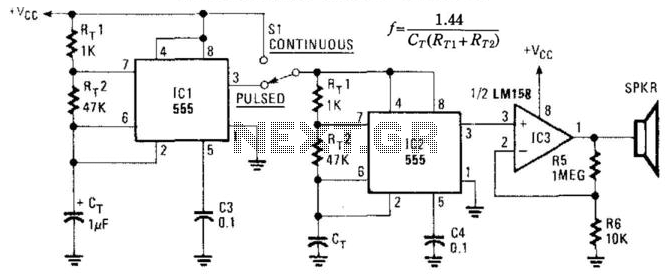
This circuit utilizes two NE555 timer IC devices to generate either pulsed or continuous ultrasonic signals. The values of CT for both pulse rate and ultrasonic frequencies can be calculated accordingly. SPKR refers to a small hi-fi tweeter.
The circuit design employs two NE555 timer integrated circuits, which are versatile and widely used in various electronic applications. The first timer is configured in astable mode, generating a square wave output that serves as the pulse signal. This output can be adjusted by changing the resistor (R) and capacitor (C) values in the timing circuit, allowing for precise control of the pulse rate. The duty cycle of the output can also be modified to create different pulse widths, which may be beneficial for specific ultrasonic applications.
The second NE555 timer is configured to either replicate the pulse signal from the first timer or to operate in monostable mode, producing a continuous signal based on the input trigger. This configuration allows for flexibility in generating ultrasonic frequencies, which are typically above the audible range (20 kHz). The frequency of the output signal can be determined using the formula:
\[ f = \frac{1.44}{(R1 + 2R2)C} \]
where R1 and R2 are the resistors connected to the timing capacitor C. The choice of C (timing capacitor) is crucial, as it directly influences both the pulse rate and the frequency of the ultrasonic signals.
The output from the second NE555 timer is then fed into a small high-fidelity tweeter (SPKR), which converts the electrical signals into audible sound waves. The tweeter is capable of reproducing high-frequency sounds, making it suitable for ultrasonic applications.
Overall, this circuit is effective for generating ultrasonic signals for various applications, including distance measurement, pest control, and other ultrasonic sensing technologies, while providing the flexibility to adjust the frequency and pulse characteristics as needed. Using two NE555 timer IC devices, this circuit generates either pulsed or continuous ultrasonic signals. The value s of CT for both pulse rate and ultrasonic frequencies can be calculated this way. SPKR is a small hi-fi tweeter.
The circuit design employs two NE555 timer integrated circuits, which are versatile and widely used in various electronic applications. The first timer is configured in astable mode, generating a square wave output that serves as the pulse signal. This output can be adjusted by changing the resistor (R) and capacitor (C) values in the timing circuit, allowing for precise control of the pulse rate. The duty cycle of the output can also be modified to create different pulse widths, which may be beneficial for specific ultrasonic applications.
The second NE555 timer is configured to either replicate the pulse signal from the first timer or to operate in monostable mode, producing a continuous signal based on the input trigger. This configuration allows for flexibility in generating ultrasonic frequencies, which are typically above the audible range (20 kHz). The frequency of the output signal can be determined using the formula:
\[ f = \frac{1.44}{(R1 + 2R2)C} \]
where R1 and R2 are the resistors connected to the timing capacitor C. The choice of C (timing capacitor) is crucial, as it directly influences both the pulse rate and the frequency of the ultrasonic signals.
The output from the second NE555 timer is then fed into a small high-fidelity tweeter (SPKR), which converts the electrical signals into audible sound waves. The tweeter is capable of reproducing high-frequency sounds, making it suitable for ultrasonic applications.
Overall, this circuit is effective for generating ultrasonic signals for various applications, including distance measurement, pest control, and other ultrasonic sensing technologies, while providing the flexibility to adjust the frequency and pulse characteristics as needed. Using two NE555 timer IC devices, this circuit generates either pulsed or continuous ultrasonic signals. The value s of CT for both pulse rate and ultrasonic frequencies can be calculated this way. SPKR is a small hi-fi tweeter.
